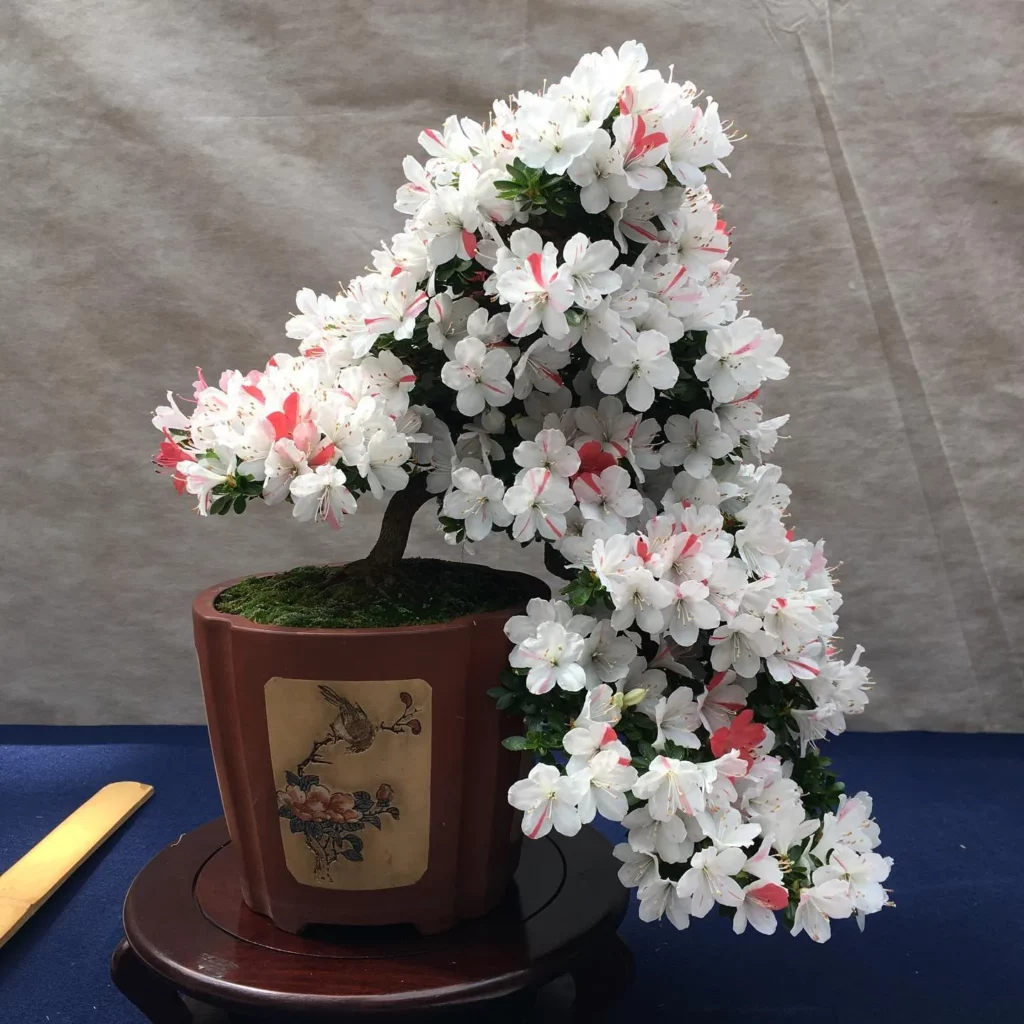Azalea Bonsai, scientifically known as Rhododendron spp., is a popular choice for bonsai enthusiasts. These trees, native to Japan, are ideal for balconies, gardens, and terraces. With thousands of varieties available, Azalea Bonsai offers a wide range of beautiful blooms. In this article, we will provide you with essential care hacks to ensure your Azalea Bonsai thrives. From appearance to pests and diseases, we’ve got you covered.
Key Takeaways:
- Azalea Bonsai, also known as Rhododendron spp., is a popular bonsai choice.
- It is native to Japan and offers a variety of stunning blooms.
- Proper care is essential for the health and vitality of your Azalea Bonsai.
- Consider factors like light, watering, fertilizing, and pruning for optimal care.
- Be aware of common pests and diseases that can affect your Azalea Bonsai.
Appearance of Azalea Bonsai
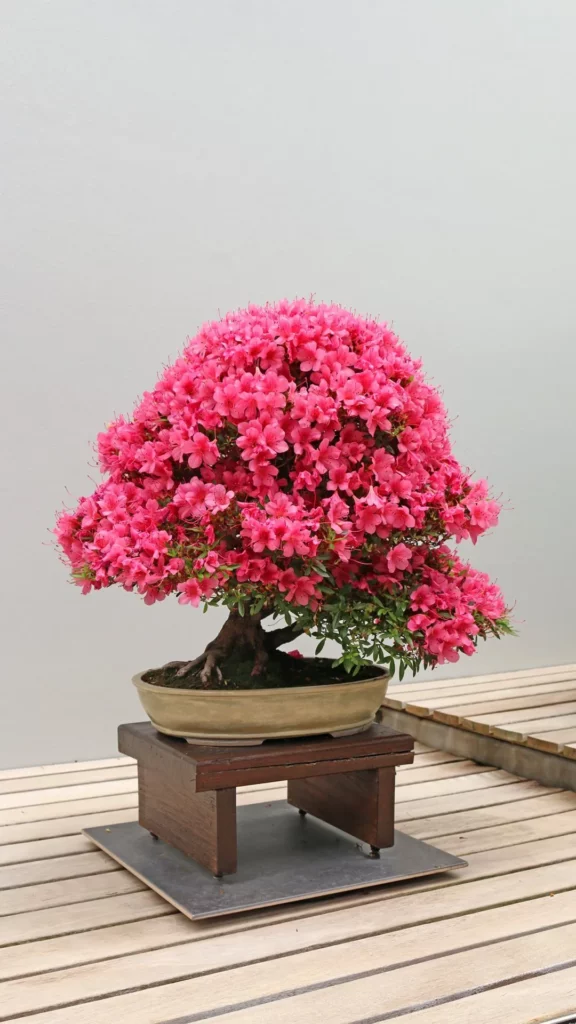

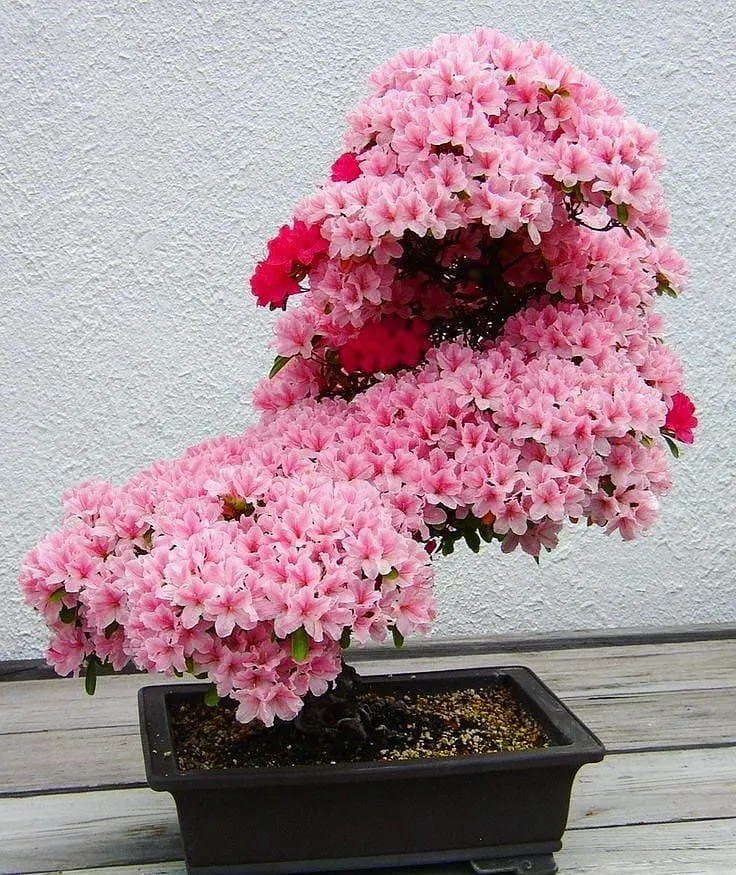
Azalea Bonsai is a stunning shrub or small tree that adds a burst of color to any garden or terrace. With its vibrant flowering and captivating forms, this bonsai variety is a true delight for plant enthusiasts. Azalea Bonsai can grow anywhere between 3 to 15 feet in height, depending on the species or variety. Its spread can range from 3 to 12 feet, creating a beautiful and lush display.
The range of colors that Azalea Bonsai offers is truly impressive. From soft pastels to vibrant reds, pinks, and purples, there is an Azalea Bonsai variety to suit every taste and preference. The flowers can be single or double blooms, adding further variety and charm to the plant.
Key Points:
- Azalea Bonsai is a shrub or small tree known for its vibrant flowering.
- It can grow between 3 to 15 feet in height and has a spread of 3 to 12 feet.
- Azalea Bonsai offers a stunning variety of colors and forms, making it a captivating addition to any garden.
Light Requirements for Azalea Bonsai

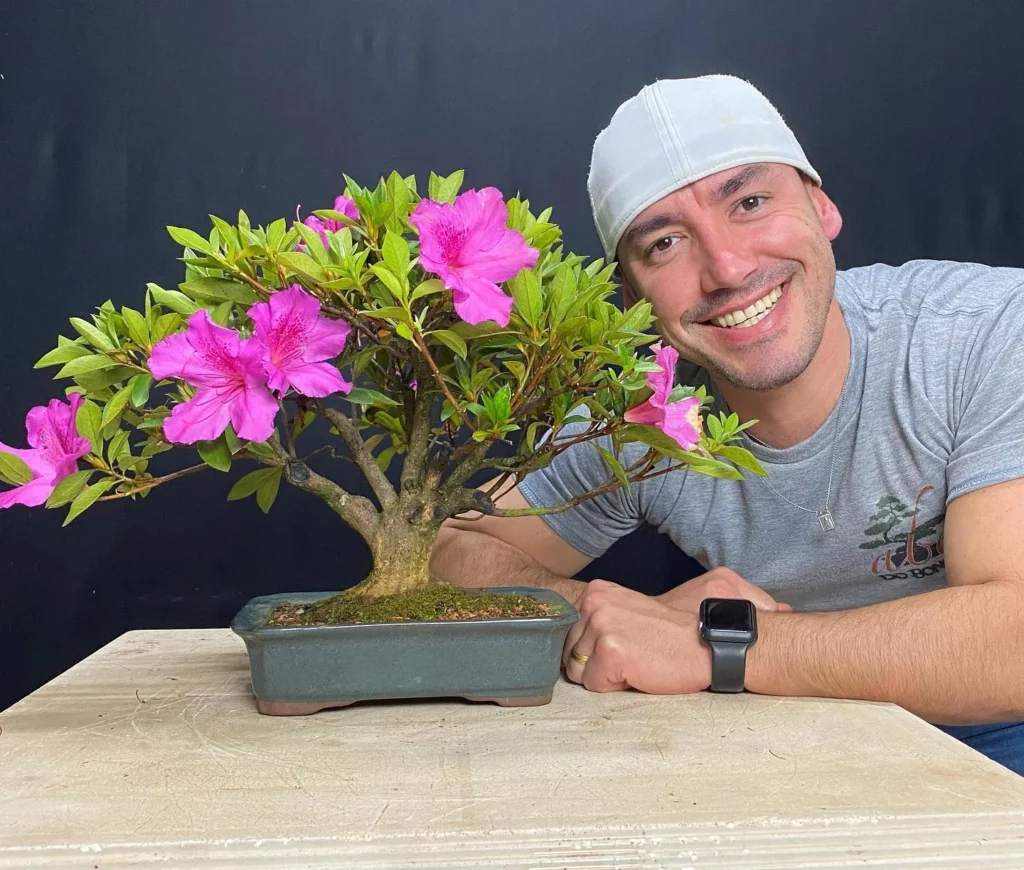
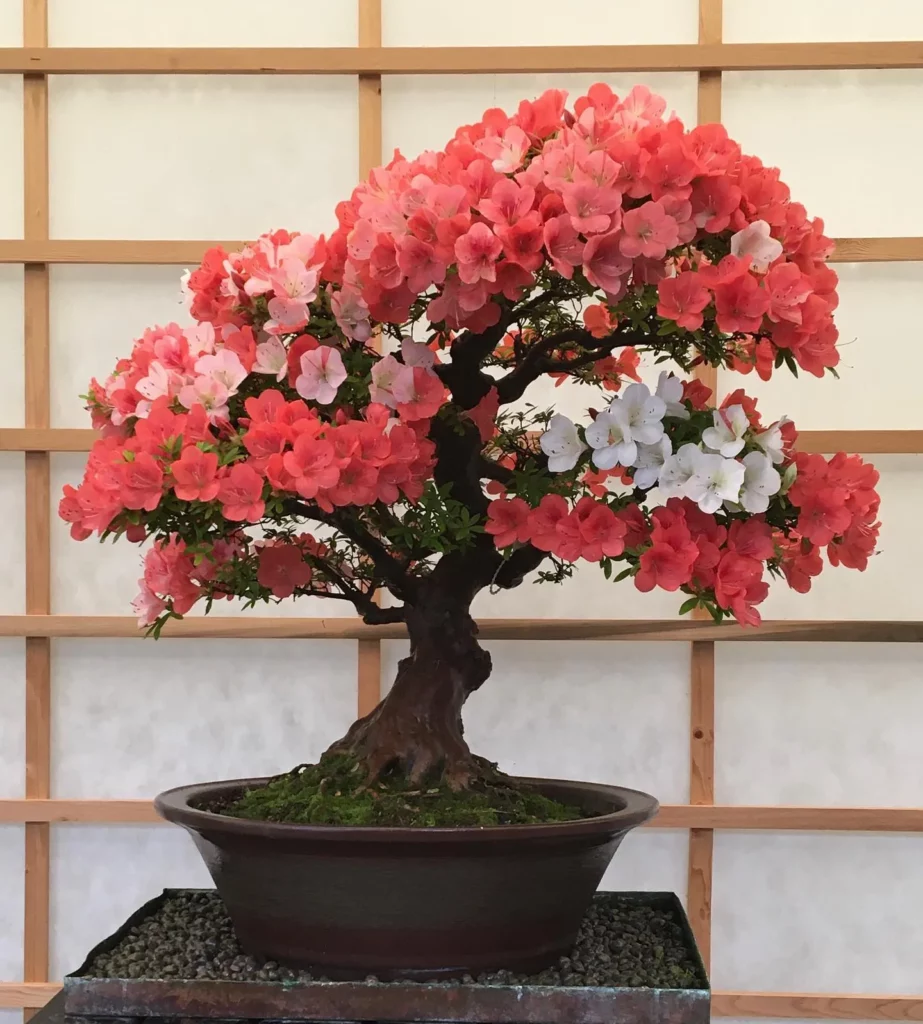
Azalea Bonsai thrives in partial or filtered shade, making it important to provide the right balance of shade and sunlight for optimal growth. Here are some key points to keep in mind when it comes to the light requirements of your Azalea Bonsai:
- Avoid full sun exposure: While Azalea Bonsai needs some sunlight, it is best to avoid placing it in direct sunlight, especially during the hottest parts of the day. Too much sun can burn the leaves and cause damage to the plant.
- Choose the right location: Find a spot that provides morning sun followed by afternoon shade. This will give your Azalea Bonsai the right amount of light without exposing it to excessive heat.
- Protect from intense heat: In regions with hot climates, it is crucial to shield your Azalea Bonsai from intense heat. Consider providing extra shade during the hottest months to prevent leaf burning and stress on the plant.
Watering Azalea Bonsai
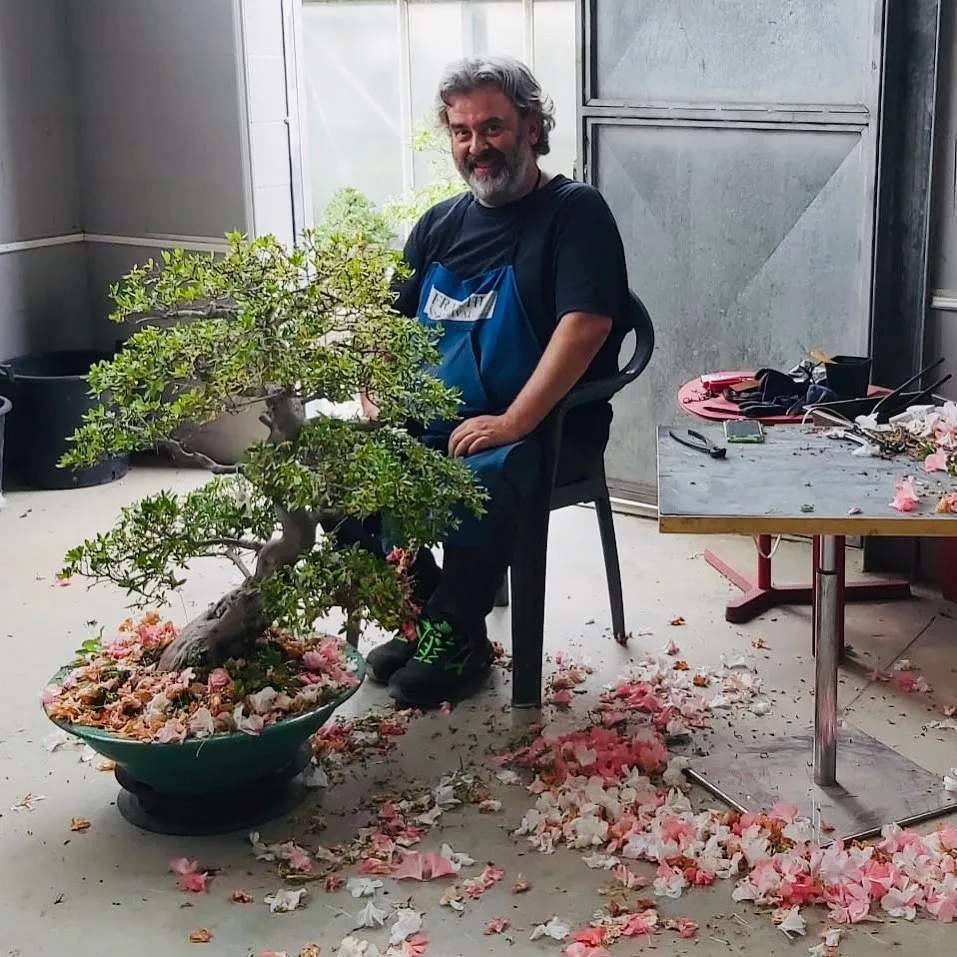


Proper watering is essential for the health and vitality of your Azalea Bonsai. Here are some important tips to keep in mind:
- Frequency: Azalea Bonsai requires regular watering, especially during the summer months when the weather is hot. Aim to keep the soil consistently moist, but not waterlogged.
- Watering Technique: When watering your Azalea Bonsai, make sure to water the soil directly and avoid getting water on the leaves. This will help prevent fungal diseases and rot.
- Water Quality: Azaleas prefer slightly acidic soil, so it’s important to use water with an acidic pH. Avoid using tap water that contains high levels of lime, as it can harm the plant. If necessary, you can adjust the pH of your water by adding a small amount of vinegar or citric acid.
Fertilizing Azalea Bonsai
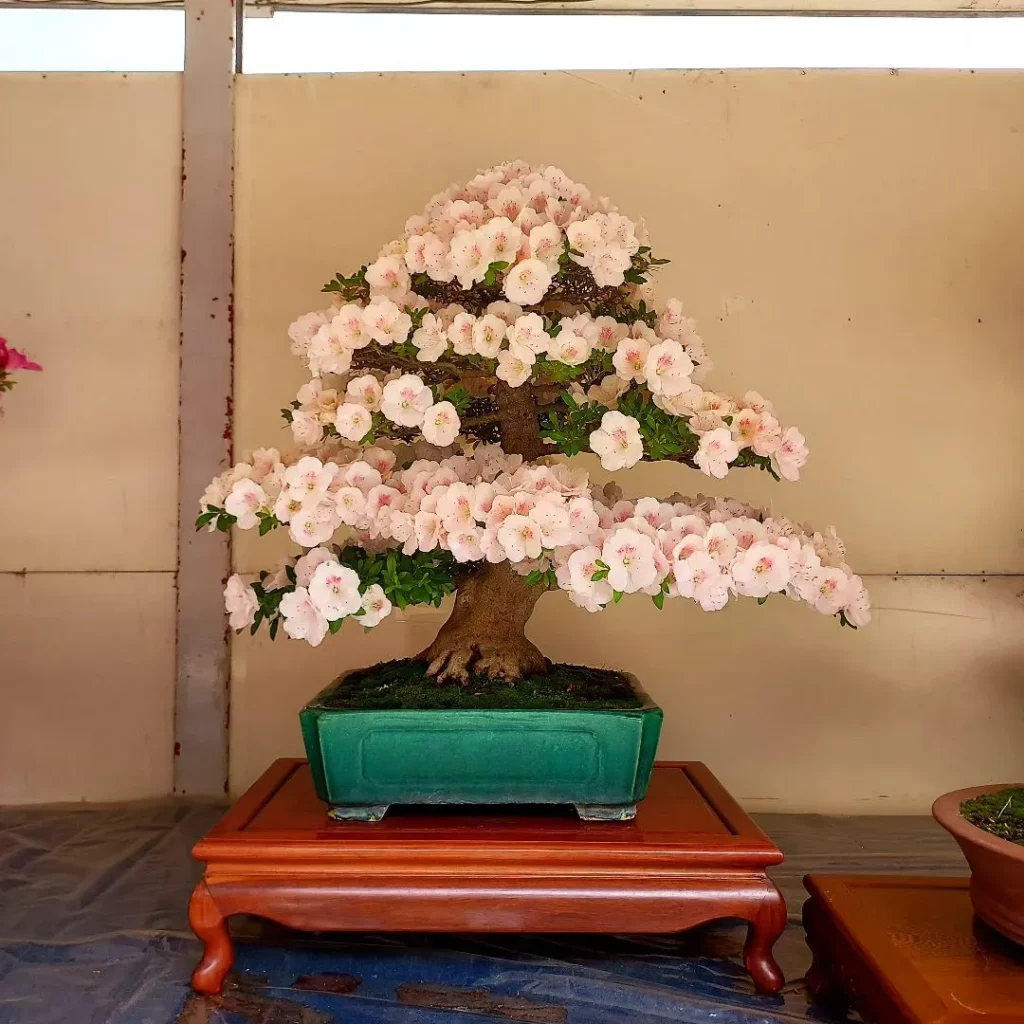


Fertilization plays a crucial role in the healthy growth and development of your Azalea Bonsai. Here are some essential tips to help you fertilize your bonsai effectively:
- Use a fertilizer specifically designed for azaleas or rhododendrons. These fertilizers are formulated to provide the necessary nutrients for optimal growth and blooming.
- Apply the fertilizer in the spring and fall seasons. These are the ideal times to promote healthy growth and replenish any nutrient deficiencies.
- Follow the recommended dosage on the fertilizer packaging. Over-fertilizing can harm the shallow roots of the bonsai, so it’s important to apply the fertilizer in the right amount.
- Avoid fertilizing during the flowering period or use only half of the recommended dosage. This will prevent any potential negative impact on blooming while still providing essential nutrients.
- Water the bonsai thoroughly after fertilizing to ensure proper absorption of the nutrients into the soil.
Potting Azalea Bonsai

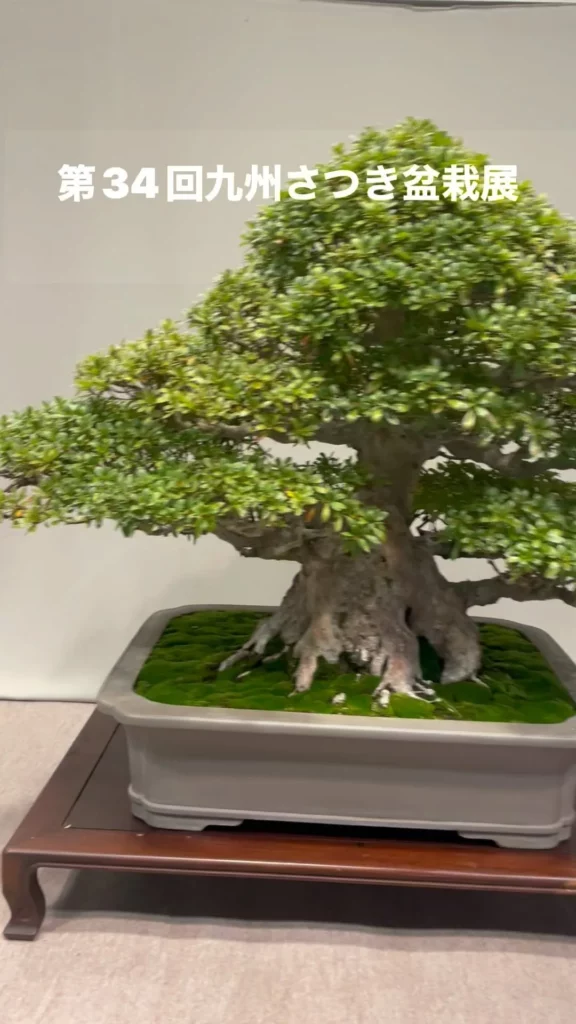
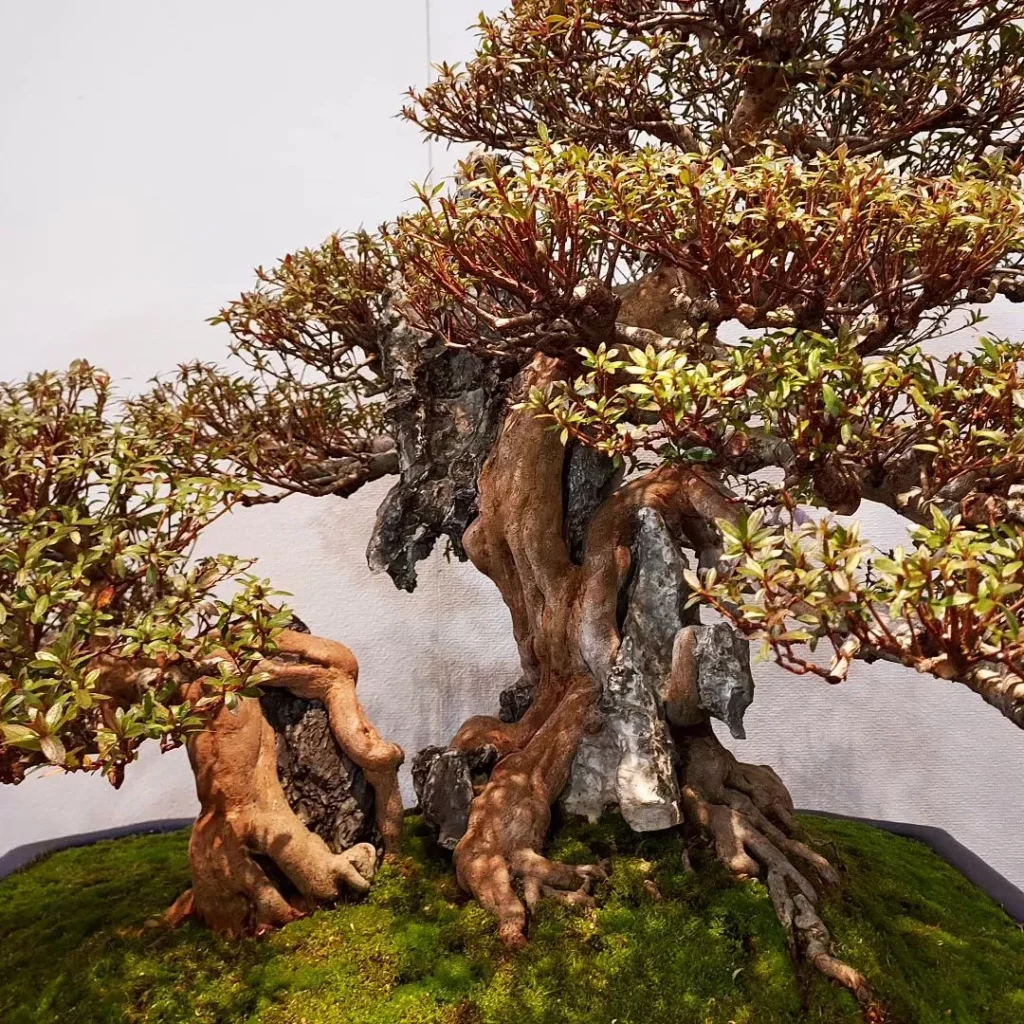
Potting is an essential aspect of caring for your Azalea Bonsai. Here are some tips to help you pot your bonsai effectively:
Choosing the Right Pot
- Select a pot that is slightly larger than the current root system of your Azalea Bonsai. This will allow room for future growth without overwhelming the tree.
- Opt for a pot with good drainage holes to prevent waterlogging, which can cause root rot.
- Consider using shallow pots to mimic the natural growing conditions of Azalea Bonsai in the wild.
Preparing the Potting Soil
- Use a well-draining soil mixture with an acidic pH, such as 100% Kanuma or a mixture with 20% volcanic gravel.
- Ensure the soil is loose and airy to promote healthy root development.
Repotting Your Azalea Bonsai
- Repot your Azalea Bonsai every 2 to 3 years, preferably after the flowering period.
- Gently remove the tree from its current pot, taking care not to damage the roots.
- Trim any excessively long or damaged roots before placing the tree in the new pot.
- Fill the pot with the prepared potting soil, making sure to spread the roots evenly and avoid air pockets.
- Water the bonsai thoroughly after repotting to help settle the soil around the roots.
Propagation of Azalea Bonsai
If you want to expand your collection of Azalea Bonsai or share this beautiful plant with others, you can propagate it through various methods. Each propagation method has its own requirements and techniques, so you can choose the one that suits you best.
1. Seed Propagation:
Seed propagation is the most common method for Azalea Bonsai, although it requires patience as it can take several years for the seeds to develop into a bonsai. To start, collect the seeds from mature Azalea Bonsai flowers and plant them in a well-draining potting mix. Keep the soil consistently moist and provide a warm, humid environment. It may take 2 to 3 months for the seeds to germinate.
2. Cutting Propagation:
Cutting propagation is a faster method for propagating Azalea Bonsai. Take a cutting from a healthy, mature Azalea Bonsai plant during the spring or early summer. Remove the lower leaves, dip the cut end in rooting hormone, and plant it in a well-draining potting mix. Keep the soil moist and provide a warm, bright location. The cuttings should root within a few weeks.
3. Air Layering:
Air layering is a more advanced propagation technique for Azalea Bonsai. Choose a branch that is about one year old and still flexible. Remove a section of bark and apply rooting hormone to the exposed area. Wrap the area with moist sphagnum moss and cover it with plastic wrap. After a few months, roots should form. Once the roots are well established, you can cut the branch below the air layer and plant it in a pot.
4. Grafting:
Grafting is another advanced method for propagating Azalea Bonsai. It involves joining a piece of an Azalea Bonsai plant, known as the scion, onto a different plant, known as the rootstock. This method allows for the combination of desirable traits from different plants. Grafting should be done during the spring or early summer when the plants are actively growing.
Growth and Development of Azalea Bonsai
When it comes to the growth and development of your Azalea Bonsai, there are a few important factors to consider. This plant has a unique growth pattern, with more vigor in the lower branches compared to the apex. To maintain the desired shape and size of your bonsai, it is recommended to prune the branches after flowering. Additionally, pinching is an essential technique that involves cutting down a shoot to 2 leaves when it has grown to 6 to 8 leaves. These pruning and pinching practices help promote healthy growth and maintain the aesthetic appeal of your Azalea Bonsai.
Proper care and maintenance also play a crucial role in the growth and development of your Azalea Bonsai. Providing the right balance of light is essential, as Azalea Bonsai thrives in partial or filtered shade. It performs best when exposed to morning sun followed by afternoon shade. Watering should be done carefully, ensuring proper moisture levels in the soil to prevent drying out or waterlogging. Using a high-quality, acidic pH fertilizer specifically designed for azaleas or rhododendrons will provide the necessary nutrients for healthy growth.
Potting and repotting
- Azalea Bonsai should be repotted every 2 to 3 years, preferably after flowering.
- Use a substrate with an acidic pH, such as 100% Kanuma or a mixture with 20% volcanic gravel.
- Choose a suitable pot size to ensure proper growth and development of the bonsai.
Common Pests and Diseases
- Azalea Bonsai can be susceptible to pests such as nematodes, mealybugs, aphids, and spider mites.
- Regular inspection and appropriate pest control measures should be taken to prevent infestation.
- Diseases like petal blight, leaf spots, and powdery mildew can also affect Azalea Bonsai.
- Proper cultural practices and maintenance can help prevent and control these common pests and diseases.
Common Pests and Diseases of Azalea Bonsai
Azalea Bonsai, like any other plant, can be vulnerable to various pests and diseases. It is important to be aware of these common issues so that you can take prompt action to prevent and control them. Here are some of the pests and diseases that can affect Azalea Bonsai:
Pests:
- Nematodes: These microscopic worms can cause root damage and stunt the growth of your Azalea Bonsai.
- Mealybugs: These small, white insects can infest the leaves and stems, sucking sap and weakening the plant.
- Aphids: These tiny insects can cluster on the leaves and buds, causing distortion and yellowing.
- Bark Scale: These armored insects can attach themselves to the bark and cause damage by feeding on the sap.
- Spider Mites: These minuscule pests can spin webs and suck sap from the leaves, leading to discoloration and defoliation.
- Lace Bugs: These insects feed on the undersides of the leaves, causing yellowing and stippling.
Diseases:
- Petal Blight: This fungal disease can cause browning and decay of the flowers, leading to their premature death.
- Leaf Spots: These fungal or bacterial infections can manifest as small, discolored spots on the leaves, eventually causing them to drop.
- Powdery Mildew: This fungal disease appears as a white, powdery coating on the leaves, affecting their health and appearance.
- Rust: This fungal disease causes orange or brown pustules on the undersides of leaves, leading to defoliation.
- Root Rot: This disease is caused by overwatering or poorly-draining soil, leading to the decay of the roots and eventual decline of the plant.
Azalea Bonsai Care Curiosities
When it comes to Azalea Bonsai care, there are a few curiosities that make this plant stand out from the rest. These unique characteristics require specific considerations to ensure the health and beauty of your bonsai. Here are some interesting facts and tips to help you navigate the care of your Azalea Bonsai:
- Growth pattern: Unlike most other bonsai plants, Azalea Bonsai exhibits more vigor in the lower branches than in the apex. When pruning or pinching, it’s important to take this growth pattern into account to maintain the desired shape and size of your bonsai.
- Pruning and pinching: Pruning should be done after flowering to keep your Azalea Bonsai in shape. Pinching, on the other hand, should be performed when a shoot has grown to 6 to 8 leaves, cutting it down to 2 leaves. These practices help maintain the overall aesthetics of the bonsai.
- Cultural practices: Proper care and maintenance, such as watering, fertilizing, and ensuring the right light conditions, play a crucial role in the growth and development of Azalea Bonsai. By following the recommended cultural practices, you can ensure the healthy and thriving growth of your bonsai.
Choosing the Right Azalea Bonsai Variety
When it comes to selecting the perfect Azalea Bonsai variety, there are a few key factors to consider. By understanding these factors, you can choose a variety that will thrive in your specific growing conditions and bring you joy for years to come.
Size:
Azalea Bonsai varieties can vary in size, from compact and petite to larger and more substantial. Consider the space you have available and how you envision your bonsai fitting into your garden or indoor area. Smaller varieties may be better suited for balconies or limited space, while larger varieties can create a striking focal point in a larger garden.
Flower Forms and Colors:
Azaleas are known for their stunning and diverse range of flower forms and colors. Some varieties feature single flowers with five or six petals, while others have double flowers with multiple layers of petals. The colors can range from brilliant whites and pinks to vibrant oranges and reds. Think about your personal preference and the overall aesthetic you want to achieve when choosing the flower form and color of your Azalea Bonsai.
Evergreen or Deciduous:
Azalea Bonsai varieties can be categorized as either evergreen or deciduous. Evergreen varieties retain their foliage throughout the year, providing a year-round display of greenery. Deciduous varieties, on the other hand, lose their leaves in the fall, showcasing their beautiful branches and allowing for a stunning display of seasonal change. Consider your climate and the desired aesthetic when deciding between evergreen and deciduous varieties.
Conclusion
Remember to pay attention to the specific needs of your Azalea Bonsai regarding light, watering, fertilizing, and pruning. Providing the right balance of shade and sunlight, using pure and acidic water, and using the appropriate fertilizer at the right time will contribute to the health and vitality of your bonsai.
Choosing the right Azalea Bonsai variety is also important. Consider factors such as size, flower forms, and colors to find the perfect fit for your preferences and growing conditions. Keep an eye out for common pests and diseases, and take preventive measures to protect your bonsai.
In summary, with the proper care, your Azalea Bonsai will flourish and bring elegance and beauty to your surroundings. Enjoy the journey of growing and nurturing this captivating bonsai tree!
FAQ
What is Azalea Bonsai?
Azalea Bonsai, scientifically known as Rhododendron spp., is a popular choice for bonsai enthusiasts. These trees, native to Japan, are ideal for balconies, gardens, and terraces.
How tall and wide can Azalea Bonsai grow?
Azalea Bonsai can grow between 3 to 15 feet in height and has a spread of 3 to 12 feet.
What is the ideal light requirement for Azalea Bonsai?
Azalea Bonsai thrives in partial or filtered shade. It performs best when exposed to morning sun followed by afternoon shade.
How should I water Azalea Bonsai?
Azalea Bonsai requires regular and careful watering. During the summer, it needs abundant watering, while in winter, the watering should be moderate. The water used for watering should be pure and have an acidic pH.
How should I fertilize Azalea Bonsai?
Fertilization of Azalea Bonsai is recommended in spring and fall seasons. It is essential to use a fertilizer specifically designed for azaleas or rhododendrons. The fertilizer should be applied at the appropriate dosage to avoid over-fertilization.
How often should I repot Azalea Bonsai?
Azalea Bonsai should be repotted every 2 to 3 years, preferably after flowering. When repotting, it is important to use a substrate with an acidic pH.
How can I propagate Azalea Bonsai?
Azalea Bonsai can be propagated through various methods such as seed propagation, cutting propagation, air layering, and grafting.
How should I prune and pinch Azalea Bonsai?
Azalea Bonsai has a unique growth pattern, with more vigor in the lower branches compared to the apex. Pruning is recommended after flowering to maintain the desired shape and size of the bonsai. Pinching should be done when the shoot has grown to 6 to 8 leaves, cutting it down to 2 leaves.
What are the common pests and diseases of Azalea Bonsai?
Azalea Bonsai can be susceptible to pests such as nematodes, mealybugs, aphids, bark scale, spider mites, and lace bugs. It can also be affected by diseases like petal blight, leaf spots, powdery mildew, rust, and root rot.
What should I consider when caring for Azalea Bonsai?
Understanding the growth and development patterns of Azalea Bonsai, choosing the right variety, and being aware of common pests and diseases are essential factors to consider when caring for Azalea Bonsai.
How do I choose the right Azalea Bonsai variety?
When choosing an Azalea Bonsai variety, it is important to consider factors such as size, flower forms, and colors. Evergreen and non-native varieties are safe options for North American gardens.

